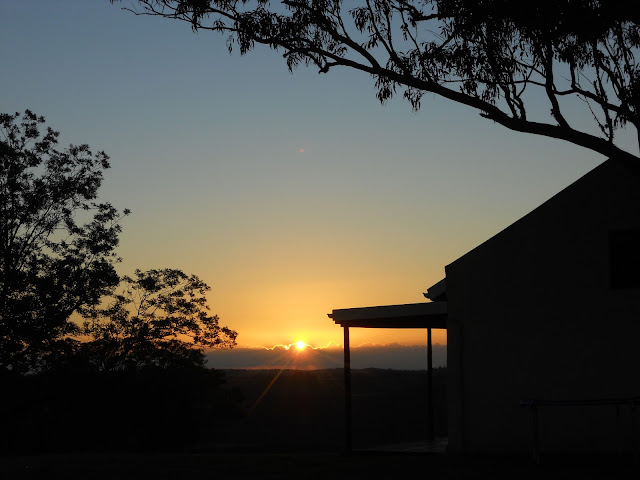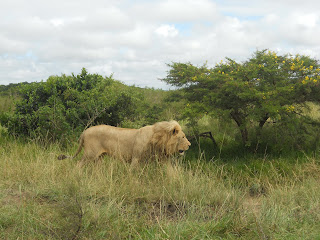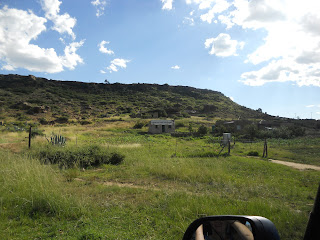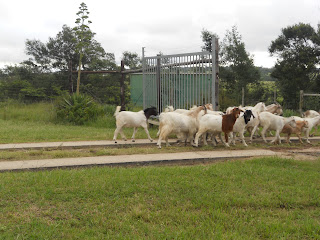It is now clear that my time abroad is running out. This has truly been a rewarding time
away. Thanks Tolt UCC for this wonderful
opportunity.
Here are some pictures of kite making and parachute play. We introduced kite making to the 5 home
schooled first and second graders first as an art project. . The making of kites was a big hit. Creating
them went smoothly, and the kites flew beautifully that day. Now, of course we have to schedule all the
other children’s opportunities to make kites.
Even the older youth are really excited.
Thanks so much Butch Harviston, for creating and making the 50 kite
kits, and for the easy instructions.
The parachute was also a hit. These children really have nothing that they
own personally. So when something as big
and as colorful as a 30 foot parachute is opened, the look of wonder and awe on
their faces can almost be overwhelming.
Thanks Tolt UCC’s Mission and Justice Committee for the parachute and
book of games.
The Rotary Club of East London had a swim-a-thon for polio one Saturday at one of the large high schools in East London. We drove our ten oldest youth in to participate in this. We really wanted to encourage this because this rotary group has taken a special interest in Open Arms. They are the group that provides each child with a Christmas gift to open on Christmas day. The ten youth were immediately overwhelmed by the size of the pool, and all the swimmers in swim uniforms. The rotary had reserved two lanes for Open Arms. So after much persuasion we were able to get them in the water. After an hour of much fun in the warm clean water, we could not get them out. Another social skills building event for Open Arms.
There was an interesting tree at Open Arms, covered with
these little red bells. It is a
poinsettia tree, yes the poinsettia we are all familiar with. This tree is thirty five to forty feet high,
with a two foot trunk and hard bark.
Next month it will leaf out somewhat, and then it will be covered with
the traditional red poinsettia flower.
These remain for several month.
As the red petals or bracts fall off, the centers of the poinsettia
flowers become these wonderful hanging bells.
During my stay here, I I also learned that the English, very
early in the 1900’s when they were fighting the Dutch Boers, (farmers and ranchers),
in a very destructive way, were way ahead of Hitler. They created these horrible and extreme
concentration camps where the wives and the children of the Dutch Boers died by
the tens of thousands at a time. The English Army was not match for the rag tag
bunch of Dutch Boers. The way the English
won was to round up all the Botch Boers wives and children and put them in
concentration camps. I was able to drive
up to Bloemfontein and visit the memorial to the women and children who died there. Here are a couple of pictures from that
memorial.
One a happier note, here was Sunrise one of the days during
my final week.
This experience at Open Arms for Children has been really rewarding. The place is full of both promise and need, providing hope and direction, and making a huge difference in a small community. This experience has been one that I will never forget. I do hope that we can keep connected with Open Arms. They will be receiving child number 52 sometime in the next week. He is a six month old boy whose mother cannot care for him, in fact he has a brother and sister already at open arms. There is always much that can be done in the way of programming, clothing, school needs, building improvement, grounds and maintenance, and daily operations. I pray that needs will continue to be met. My life has been touched by every single soul there.
This experience at Open Arms for Children has been really rewarding. The place is full of both promise and need, providing hope and direction, and making a huge difference in a small community. This experience has been one that I will never forget. I do hope that we can keep connected with Open Arms. They will be receiving child number 52 sometime in the next week. He is a six month old boy whose mother cannot care for him, in fact he has a brother and sister already at open arms. There is always much that can be done in the way of programming, clothing, school needs, building improvement, grounds and maintenance, and daily operations. I pray that needs will continue to be met. My life has been touched by every single soul there.
I also fell in love with the City of Cape Town. Doug met me there and we spent a week there. There is much to see and do there. A place to return to is hiking Table
Mountain, touring the peninsula, penguins, botanical gardens, wine tasting, shopping,
eating, and the beach filled up a week very quickly. I close with a picture of Table Mountain
taken on the return trip from Robben Island, home to the prison which housed
Nelson Mandela for so many years. See
you all next week. Thanks for this
wonderful time off and away!






















































